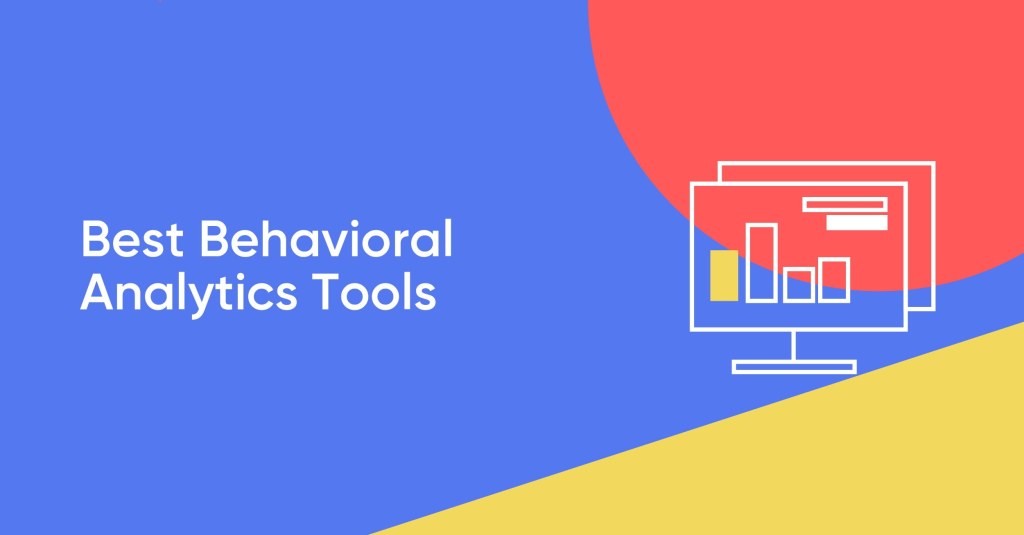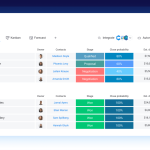Unlocking Your Potential: Mastering Software Behavioral Tools And Techniques
Software Behavioural Tools and Techniques
Welcome, Readers! In today’s digital age, understanding human behavior has become essential for businesses to thrive. Software behavioural tools and techniques provide valuable insights into consumer behavior, enabling companies to make informed decisions and tailor their strategies accordingly. In this article, we will explore the various aspects of software behavioural tools and techniques, their advantages and disadvantages, and how they can be effectively utilized. So, let’s dive in!
Table of Contents
1. Introduction
3 Picture Gallery: Unlocking Your Potential: Mastering Software Behavioral Tools And Techniques



2. What are software behavioural tools and techniques?

Image Source: plan.io
3. Who uses software behavioural tools and techniques?
4. When should software behavioural tools and techniques be employed?
5. Where can software behavioural tools and techniques be implemented?

Image Source: userguiding.com
6. Why are software behavioural tools and techniques important?
7. How to effectively utilize software behavioural tools and techniques?

Image Source: medium.com
8. Advantages of software behavioural tools and techniques
9. Disadvantages of software behavioural tools and techniques
10. Frequently Asked Questions (FAQ)
11. Conclusion
12. Final Remarks
1. Introduction
Software behavioural tools and techniques refer to a range of digital solutions and methodologies that enable businesses to analyze and interpret human behavior patterns. By collecting and processing data, these tools provide valuable insights into consumer preferences, decision-making processes, and other relevant aspects that influence their behavior. This information can then be used to optimize marketing strategies, improve user experience, and enhance overall business performance.
Software behavioural tools and techniques are widely employed in various industries, such as e-commerce, marketing, web development, and user experience design. Their effectiveness lies in their ability to uncover hidden patterns and trends, allowing companies to gain a deeper understanding of their target audience.
In the following sections, we will explore the different aspects of software behavioural tools and techniques in more detail.
2. What are software behavioural tools and techniques?
Software behavioural tools and techniques encompass a wide range of digital solutions that are designed to analyze and interpret human behavior. These tools utilize advanced algorithms and data analytics to process large volumes of data and extract meaningful insights. Some common examples of software behavioural tools and techniques include:
Heatmap analysis: This technique visualizes user interactions on a website or application, highlighting the areas that receive the most attention.
Clickstream analysis: By tracking user clicks and navigation paths, this tool provides insights into user behavior and preferences.
A/B testing: This technique involves comparing two versions of a webpage or application to determine which one performs better based on user behavior and preferences.
Customer journey mapping: This tool helps businesses understand the entire customer journey, from initial contact to conversion, by analyzing various touchpoints and interactions.
These are just a few examples of the many software behavioural tools and techniques available in the market. Each tool offers unique functionalities and insights, allowing businesses to gain a comprehensive understanding of their target audience.
3. Who uses software behavioural tools and techniques?
Software behavioural tools and techniques are widely used by businesses of all sizes and industries. From startups to multinational corporations, these tools offer valuable insights that drive data-based decision making. Marketing teams, web developers, user experience designers, and business analysts are some of the professionals who commonly utilize software behavioural tools and techniques.
By understanding user behavior, businesses can tailor their marketing messages, optimize website design, and improve overall user experience. This, in turn, leads to higher customer satisfaction, increased conversion rates, and improved business performance.
4. When should software behavioural tools and techniques be employed?
Software behavioural tools and techniques should be employed at various stages of a business’s lifecycle. Here are some common scenarios where these tools can be effectively utilized:
Website optimization: By analyzing user behavior on a website, businesses can identify areas for improvement and implement changes to enhance user experience.
Product development: Software behavioural tools and techniques can provide insights into user preferences and expectations, helping businesses create products that cater to customer needs.
Marketing strategy: By understanding consumer behavior, businesses can develop targeted marketing campaigns that resonate with their target audience, leading to higher engagement and conversion rates.
User experience design: These tools play a crucial role in optimizing the user experience by identifying pain points, streamlining processes, and improving overall usability.
In essence, software behavioural tools and techniques can be employed whenever businesses seek to gain a deeper understanding of their target audience and improve their overall performance.
5. Where can software behavioural tools and techniques be implemented?
Software behavioural tools and techniques can be implemented in various digital platforms and channels. Some common areas where these tools are utilized include:
Websites: By analyzing user behavior on websites, businesses can optimize design elements, improve conversion rates, and enhance user experience.
Mobile applications: These tools can provide insights into user behavior within mobile applications, allowing businesses to make data-driven decisions for app optimization.
Email marketing: By tracking user interactions with email campaigns, businesses can refine their email marketing strategies and improve engagement rates.Social media: Software behavioural tools and techniques are often used to analyze user behavior on social media platforms, enabling businesses to create targeted content and campaigns.
These are just a few examples of the many digital platforms and channels where software behavioural tools and techniques can be implemented. The key is to leverage these tools wherever businesses interact with their target audience.
6. Why are software behavioural tools and techniques important?
Software behavioural tools and techniques are important for several reasons:
1. Data-driven decision making: By providing valuable insights into user behavior, these tools enable businesses to make informed decisions based on real data rather than assumptions.
2. Improved user experience: By understanding user preferences and pain points, businesses can optimize their products and services to deliver a seamless user experience.
3. Enhanced marketing strategies: With the ability to analyze consumer behavior, businesses can develop targeted marketing campaigns that resonate with their target audience, resulting in higher engagement and conversion rates.
4. Competitive advantage: By leveraging software behavioural tools and techniques, businesses can gain a competitive edge by understanding their customers better and tailoring their strategies accordingly.
7. How to effectively utilize software behavioural tools and techniques?
While software behavioural tools and techniques offer valuable insights, their effectiveness relies on how they are utilized. Here are some tips to effectively utilize these tools:
1. Set clear objectives: Define what specific insights you aim to gain from these tools and align them with your business goals.
2. Choose the right tools: Research and select software behavioural tools that align with your objectives and provide the functionalities you require.
3. Collect and analyze relevant data: Ensure that you gather accurate and relevant data to obtain meaningful insights. Data quality and accuracy are crucial for reliable analysis.
4. Interpret the results: Analyze the data collected by software behavioural tools and techniques to uncover patterns, trends, and actionable insights.
5. Implement changes: Based on the insights gained, make the necessary changes to your marketing strategies, user experience design, or product development processes.
6. Continuously monitor and optimize: Software behavioural tools and techniques should be utilized on an ongoing basis to monitor user behavior, identify areas for improvement, and optimize your strategies accordingly.
By following these steps, businesses can effectively utilize software behavioural tools and techniques to gain valuable insights and drive their success.
8. Advantages of software behavioural tools and techniques
Software behavioural tools and techniques offer several advantages:
1. Enhanced understanding of the target audience: By analyzing user behavior, businesses can gain a deep understanding of their target audience’s preferences, needs, and decision-making processes.
2. Data-driven decision making: These tools provide real-time insights and data, enabling businesses to make informed decisions based on objective information rather than assumptions.
3. Improved user experience: By identifying pain points and optimizing design elements, businesses can enhance the overall user experience, leading to higher customer satisfaction and loyalty.
4. Targeted marketing campaigns: With the ability to analyze consumer behavior, businesses can develop targeted marketing campaigns that resonate with their audience, resulting in higher engagement and conversion rates.
5. Competitive advantage: By utilizing software behavioural tools and techniques, businesses can gain a competitive edge by understanding their customers better and tailoring their strategies accordingly.
9. Disadvantages of software behavioural tools and techniques
While software behavioural tools and techniques offer numerous benefits, they also have some limitations:
1. Ethical considerations: Collecting and analyzing user data raises ethical concerns, such as privacy and data security. Businesses must ensure that they handle user data responsibly and comply with relevant regulations.
2. Data accuracy: The accuracy of the insights generated by these tools relies on the quality and accuracy of the collected data. Inaccurate or incomplete data may lead to misleading conclusions.
3. Overreliance on data: While data is valuable, businesses should also consider other factors, such as creativity and intuition, to make well-rounded decisions.
4. Complexity: Software behavioural tools and techniques may require specialized knowledge and skills to implement and interpret effectively. Businesses should allocate resources for training and expertise.
5. Cost: Depending on the complexity and functionalities required, software behavioural tools and techniques can be expensive to implement and maintain. Businesses should consider the return on investment before adopting these tools.
10. Frequently Asked Questions (FAQ)
1. What data is collected by software behavioural tools and techniques?
Software behavioural tools collect various types of data, including user interactions, navigation patterns, demographics, and preferences. The specific data collected depends on the tool and its functionalities.
2. How can software behavioural tools and techniques benefit e-commerce businesses?
Software behavioural tools and techniques can benefit e-commerce businesses by providing insights into user behavior, preferences, and pain points. This information can be used to optimize website design, personalize marketing campaigns, and improve the overall shopping experience.
3. Are software behavioural tools and techniques suitable for small businesses?
Yes, software behavioural tools and techniques are valuable for businesses of all sizes. Small businesses can use these tools to gain insights into their target audience, optimize their strategies, and compete effectively in the market.
4. How can businesses ensure the privacy and security of user data when utilizing software behavioural tools and techniques?
Businesses must implement robust data security measures, comply with relevant data protection regulations, and ensure transparency in data collection and usage. Anonymizing and aggregating data whenever possible can also help protect user privacy.
5. Can software behavioural tools and techniques predict future behavior?
While software behavioural tools and techniques can provide insights into past and current behavior, predicting future behavior accurately is challenging. These tools can, however, identify trends and patterns that may help businesses make informed predictions.
11. Conclusion
In conclusion, software behavioural tools and techniques offer invaluable insights into human behavior, enabling businesses to make data-driven decisions and optimize their strategies. By understanding user preferences, pain points, and decision-making processes, businesses can enhance user experience, improve marketing campaigns, and gain a competitive edge. However, it is important to consider the ethical aspects, data accuracy, and cost implications when utilizing these tools. By effectively utilizing software behavioural tools and techniques, businesses can unlock the full potential of their target audience and drive their success in the digital landscape.
12. Final Remarks
Software behavioural tools and techniques have revolutionized the way businesses understand and interact with their target audience. However, it is essential to use these tools responsibly and ethically. Businesses must prioritize user privacy, data security, and compliance with regulations. By doing so, they can leverage the power of software behavioural tools and techniques while maintaining trust and loyalty with their customers. Embrace these tools, but always remember to handle user data with care and transparency. Together, let’s unlock the true potential of software behavioural tools and techniques for a brighter digital future!
This post topic: Software Tutorials
